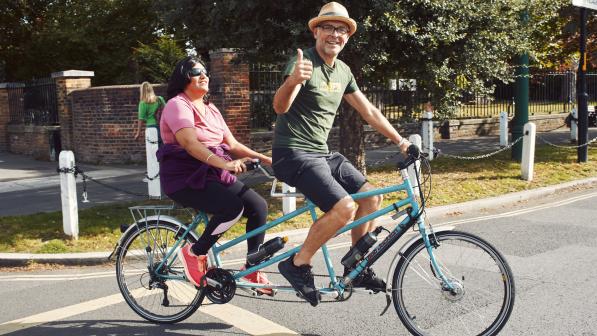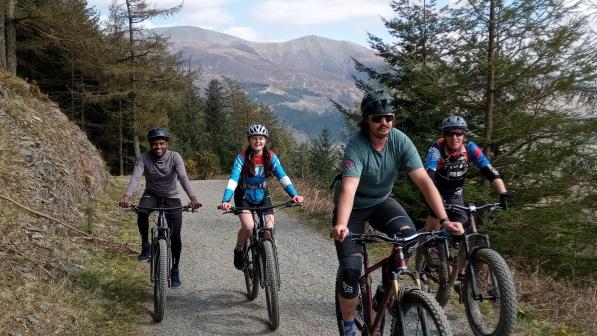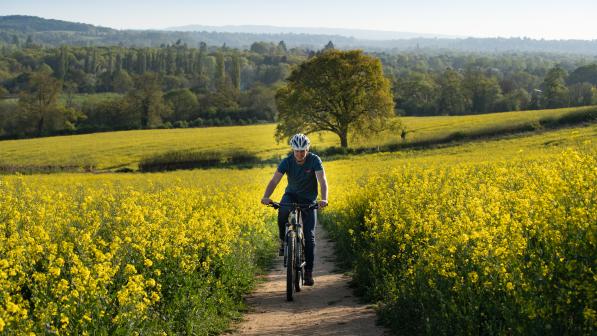Spring training for summer cycling

Spring is the perfect season to kickstart your cycling training, laying the foundation for success in the warmer months ahead. Whether you’re a seasoned cyclist or a novice rider, here are some essential tips to help you make the most of your spring training and set yourself up for a summer of cycling achievements.
Start gradually
After months of indoor cycling or reduced activity during the winter, it’s important to ease back into training to avoid injury. Begin with shorter rides at a moderate intensity, gradually increasing the duration and intensity as your fitness improves.
Injury prevention
Rapidly increasing the intensity or duration of your rides without proper preparation can put you at risk of overuse injuries such as tendonitis, muscle strains or stress fractures. Starting gradually allows your body time to adapt to the increased demands now that you’re back out cycling more, reducing the likelihood of injury.
Muscle adaptation
Cycling engages specific muscle groups, and these muscles may have become deconditioned during the colder months with time off or reduced time in the saddle. Starting with shorter, less intense rides allows these muscles to gradually adapt to the demands of cycling again, reducing muscle soreness and improving overall performance.
Cardiovascular adaptation
Similarly, your cardiovascular system needs time to adjust to the returned demands of cycling now the weather is starting to get nicer. Beginning with shorter rides at a moderate intensity helps improve cardiovascular fitness gradually, enhancing endurance and aerobic capacity over time.
Mental adjustment
After a winter of inactivity or reduced activity, it’s common for motivation levels to fluctuate. Starting gradually allows you to ease back into your training routine without feeling overwhelmed, helping you regain confidence and motivation as you progress.
Focus on base miles
Focusing on base miles during the spring months lays a solid foundation for success in cycling by improving endurance and adapting your muscles back to life in the saddle. By incorporating regular, long, steady rides into your training regimen and gradually increasing the duration over time, you’ll set yourself up for a strong performance in the summer months ahead.
Build endurance
Base miles form the foundation of your cycling fitness by improving endurance and aerobic capacity. These longer, steady-paced rides develop the cardiovascular system, enhancing your ability to sustain effort over extended periods.
Muscle adaptation
Base miles provide an opportunity for muscles, tendons and ligaments to adapt back to their regular levels of use before the winter months and poor weather resulted in less time cycling. The consistent, low-intensity effort helps build muscular endurance and resilience, reducing the risk of overuse injuries.

Embrace variety
While base miles are crucial, don’t neglect variety in your training regimen. Incorporate interval sessions, hill repeats and tempo rides to improve strength, speed and power. Mixing up your workouts also helps prevent boredom and keeps your training stimulating.
Prevents plateaus
Cycling is a diverse sport that requires a combination of endurance, strength, speed and skill. Incorporating a variety of training techniques means that your body will continue to adapt and improve across all these areas, reducing the risk of performance plateaus.
Balanced development
Different types of rides target different energy systems and muscle groups. By embracing variety, you ensure more balanced development across aerobic capacity, muscular endurance, sprinting ability and technical skills, leading to a more well-rounded cyclist.
Pay attention to technique
Use the spring training season to fine-tune your cycling technique. Focus on maintaining a smooth and efficient pedal stroke, proper body positioning and relaxed upper body posture. Consider seeking feedback from experienced cyclists or investing in a professional bike fitting to optimise your riding position.
Efficiency
Proper cycling technique allows you to generate more power with less effort, improving overall efficiency. By optimising your pedalling mechanics, body position and aerodynamics, you can maintain higher speeds and cover longer distances with less fatigue.
Injury prevention
Poor cycling technique can lead to overuse injuries such as knee pain, lower back strain and neck discomfort. By maintaining correct posture and alignment, you reduce the risk of strain on joints, minimising the likelihood of injury.
Power generation
Efficient pedalling technique involves applying force to the pedals throughout the entire pedal stroke, maximising power output. By focusing on smooth, circular pedal strokes and engaging all major muscle groups, you can generate more power and improve overall performance.

Strength and flexibility
Incorporate strength training and flexibility exercises into your spring training routine to improve overall performance and reduce the risk of injury. Focus on exercises that target muscles used in cycling, such as the quadriceps, hamstrings, glutes and core, as well as stretches to maintain flexibility and range of motion.
Enhanced performance
Strength training improves muscular endurance and power, allowing you to generate more force with each pedal stroke and maintain higher speeds for longer durations. Flexibility training increases range of motion, reducing resistance and improving efficiency in your pedal stroke and overall movement patterns.
Overall health and wellbeing
Beyond cycling-specific benefits, strength and flexibility training contribute to overall health and wellbeing. Regular strength training helps maintain bone density, muscle mass and metabolic function, while flexibility training promotes relaxation, stress relief and improved posture in daily activities.
Check your bike
Spring is also a good time to give your bike some TLC. Schedule a professional tune-up or perform a thorough check yourself to ensure your bike is in optimal condition for the season ahead. Pay attention to tyre pressure, chain lubrication, brake performance and overall bike fit.
Safety
A well-maintained bike is essential for safe riding. Regular maintenance checks help identify and fix potential issues such as loose bolts, worn brake pads or frayed cables that could put you in danger on the road or trail.
Performance
Properly maintained bikes perform better, providing smoother shifting, more responsive braking and overall better handling. By keeping your bike in good condition, you can maximise efficiency and enjoyment on your rides, whether you’re on the road or more technical terrain.
Durability
Regular maintenance helps extend the lifespan of your bike by preventing premature wear and tear on components. By addressing minor issues promptly and keeping your bike clean and lubricated, you can avoid costly repairs and replacements down the line.
Ride quality
A well-tuned bike offers a more comfortable and enjoyable riding experience. Proper tyre inflation, smooth drivetrain operation and well-adjusted suspension (if applicable) contribute to a smoother, more efficient ride, allowing you to focus on the scenery and enjoy the ride without distractions.
By following these spring training tips, you’ll be well on your way to priming your body and mind for a summer filled with cycling success. So, saddle up, soak in the sights and sounds of spring, and pedal your way to your best season yet on the bike!


